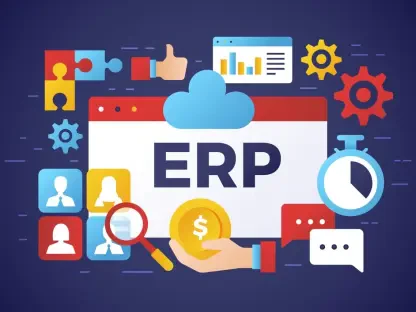In the fast-paced realm of AI and SaaS industries, where subscription-based models dominate and innovation drives competition, a staggering 4-10% of annual revenue slips through the cracks due to inefficiencies in billing processes, posing a silent yet critical threat to financial stability. As companies race to scale and adapt to dynamic customer demands, the question arises: how can billing, often seen as a mundane back-office function, become a strategic tool to reclaim lost revenue and fuel growth? This report dives into the complexities of modern monetization, exploring the challenges, trends, and solutions that can transform billing into a competitive advantage for AI and SaaS businesses.
Understanding the AI & SaaS Landscape and Billing Challenges
The AI and SaaS sectors have emerged as powerhouses of technological advancement, characterized by rapid expansion and a reliance on subscription-based revenue streams. These industries cater to diverse markets, offering everything from cloud-based software solutions to AI-driven analytics, with business models that prioritize recurring revenue over one-time sales. This structure, while lucrative, demands precision in financial operations to sustain growth and maintain customer trust amidst fierce competition.
Billing stands as a cornerstone of revenue operations in these sectors, directly influencing cash flow and profitability. However, the rise of revenue leakage—lost income due to inaccurate invoicing, manual errors, or system disconnects—threatens the financial health of many firms. This issue is not merely a minor inconvenience but a systemic challenge that can erode margins and hinder scalability if left unaddressed.
Key players like BluLogix have spotlighted these concerns, advocating for advanced billing solutions to tackle market dynamics. The industry is witnessing a shift toward complex pricing models, moving beyond traditional per-user fees to more nuanced structures. This evolution, while aligning better with customer value, introduces operational hurdles that traditional systems struggle to manage, amplifying the need for innovative approaches to billing management.
Evolving Pricing Models and Revenue Leakage in AI & SaaS
Key Trends Shaping Monetization Strategies
A significant transformation is underway in the SaaS and AI sectors, with over 60% of companies transitioning from static, seat-based pricing to usage-based and hybrid models. This shift reflects a broader effort to align pricing with actual customer consumption, whether measured in compute hours, API calls, or other metrics. Such flexibility enhances customer satisfaction but demands robust systems to track and bill for variable usage accurately.
The rise of dynamic consumption metrics, especially in AI-driven businesses, adds another layer of complexity to monetization. Real-time data integration becomes essential to capture usage patterns and translate them into billable amounts, a task that outdated tools often fail to execute seamlessly. This gap between innovation in service delivery and billing capability creates friction in revenue operations.
Moreover, aligning pricing with customer value drives this evolution but also introduces operational intricacies. Companies must navigate a maze of contracts, pricing tiers, and usage data to ensure fairness and transparency. Without the right technological backbone, these complexities can overwhelm financial teams, underscoring the urgent need for adaptive monetization strategies.
Revenue Leakage: Scale and Impact
Revenue leakage remains a pervasive issue, with SaaS firms losing an average of 4-10% of their annual revenue, and some experiencing losses as high as 26%. This financial drain stems from inefficiencies such as incorrect invoicing, untracked usage, and manual process errors. The scale of this problem highlights a critical vulnerability in the industry’s growth trajectory.
Outdated billing systems, often designed for simpler pricing structures, contribute significantly to these losses, as they fail to accommodate the nuances of modern monetization. Manual interventions, prone to human error, further exacerbate the issue, leading to discrepancies that can damage customer relationships. Insights from industry analyses reveal that without modernization, these gaps will persist.
Looking ahead, the risk of revenue leakage is poised to grow as pricing models become increasingly intricate. Projections suggest that from 2025 to 2027, firms not adopting advanced billing solutions could face escalating losses, potentially undermining their competitive edge. Proactive intervention through updated systems is essential to mitigate this looming threat.
Barriers to Effective Billing in AI & SaaS Companies
Traditional billing tools, built for static pricing, often fall short when handling the complexities of usage-based and hybrid models prevalent in AI and SaaS firms. These legacy systems struggle to process dynamic data, leading to inaccuracies in invoicing and missed revenue opportunities. This mismatch between tool capability and business needs creates a significant operational bottleneck.
Technological challenges compound the problem, with disconnected systems hindering integration between billing platforms, CRM, and ERP software. Such fragmentation results in inefficiencies, as data silos prevent a unified view of customer interactions and financial transactions. The lack of cohesion disrupts workflows and increases the likelihood of errors across revenue operations.
Addressing these barriers requires a shift toward unified billing platforms that automate processes and minimize human intervention. By streamlining data flow and enhancing system interoperability, companies can reduce errors and improve efficiency. This transition sets the foundation for strategic advancements, enabling firms to focus on growth rather than operational firefighting.
The Role of Compliance and Data Security in Billing Systems
Navigating the regulatory landscape is a critical aspect of billing for AI and SaaS companies, as data privacy laws and financial reporting standards impose strict requirements. Non-compliance can result in hefty fines and reputational damage, making it imperative for billing systems to adhere to guidelines like GDPR or CCPA. These regulations demand meticulous tracking of transactions and customer data handling.
Ensuring compliance within billing platforms involves accurate record-keeping and transparent reporting mechanisms to withstand audits and regulatory scrutiny. Beyond legal obligations, robust systems foster customer trust by demonstrating a commitment to ethical practices. This alignment with regulatory expectations is a non-negotiable facet of modern revenue operations.
Data security also plays a pivotal role, as billing systems handle sensitive customer information that must be safeguarded against breaches. Modern platforms incorporate encryption and access controls to protect data integrity, mitigating risks of unauthorized access. By prioritizing security, companies not only comply with laws but also build confidence in their financial processes, reinforcing stakeholder trust.
Future of Billing: Intelligent Platforms as a Growth Engine
The trajectory of billing in AI and SaaS industries points toward intelligent, integrated platforms that leverage real-time analytics and automation. These systems promise to revolutionize revenue operations by providing instant insights into usage patterns and billing accuracy. Such capabilities enable proactive management of financial health, a stark contrast to reactive traditional approaches.
Emerging technologies, including AI-driven billing engines, are set to disrupt conventional monetization practices by predicting customer behavior and optimizing pricing strategies. These tools can identify revenue leakage in real time, offering actionable recommendations to plug gaps. This technological leap positions billing as a driver of innovation rather than a mere administrative task.
Scalability, visibility, and adaptability stand out as crucial attributes for future billing systems, especially as market demands evolve. Platforms that support flexible pricing and integrate seamlessly with other business tools will empower companies to enhance metrics like Net Revenue Retention (NRR). Embracing these advancements ensures that billing aligns with long-term growth objectives in a dynamic landscape.
Conclusion: Transforming Billing into a Strategic Advantage
Reflecting on the insights gathered, it becomes evident that addressing revenue leakage and billing inefficiencies is a pressing concern for AI and SaaS firms. The exploration of evolving pricing models and technological barriers underscores the urgent need for modernization in revenue operations. Industry analyses consistently point to the transformative impact of adopting advanced solutions as a means to safeguard financial stability.
Moving forward, companies are encouraged to invest in unified monetization platforms equipped with flexible pricing engines and leakage detection analytics. Such systems offer a pathway to not only recover lost revenue but also enhance customer satisfaction through transparent billing practices. This strategic shift is seen as vital for maintaining a competitive edge.
As a next step, businesses should prioritize partnerships with solution providers that emphasize automation and integration to streamline their operations. Evaluating billing infrastructure for scalability and compliance is deemed essential to prepare for future market shifts. By reimagining billing as a growth enabler, AI and SaaS firms can position themselves for sustained success in an ever-changing environment.









